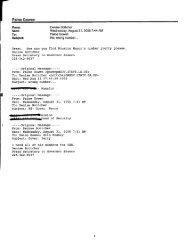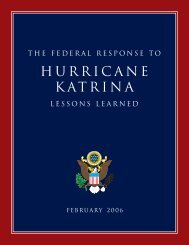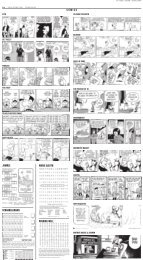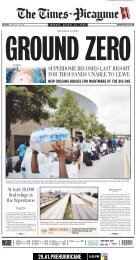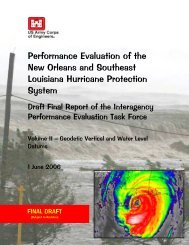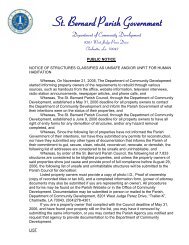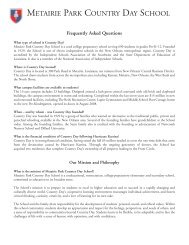IPET Report 3 Vol VIII
IPET Report 3 Vol VIII
IPET Report 3 Vol VIII
Create successful ePaper yourself
Turn your PDF publications into a flip-book with our unique Google optimized e-Paper software.
Wave Setup Relative to Maximum Wave Setup<br />
1.0<br />
0.8<br />
0.6<br />
0.4<br />
0.2<br />
0.0<br />
0.0 0.2 0.4 0.6 0.8 1.0<br />
Depth Relative to Breaking Depth<br />
Figure 16. Proportion of Maximum Wave Setup that has Occurred versus a Proportion of the Breaking<br />
Depth<br />
Determination of Hurricane Frequencies<br />
Each storm considered in the MR1 ADCIRC simulation set is envisioned to represent all<br />
possible storms with similar values of radius, central pressure, and so forth. Accordingly, a rate<br />
of occurrence is assigned to each storm, representing the total rate of occurrence of all similar<br />
storms.<br />
The controlling factors are the overall density of storms in space and time – λ0 – and the<br />
fractional occurrence rates of each of a storm’s several defining parameters. These are the central<br />
pressure deficit, ΔP, the radius to maximum winds, Rmax, the forward translation speed of the<br />
storm, V, the shoreline crossing angle, θ, and the crossing location, X. The fractional occurrence<br />
rates for the parameters are derived from the cumulative probability distribution functions for<br />
each, by dividing the CDF into segments centered on each selected parameter value.<br />
For example, crossing angles of -60, -30, 0, 30, and 60 degrees clockwise from north were<br />
selected for simulation. The fraction of all storms represented by the discrete value 30, say, is<br />
equal to the total probability mass for all angles between 15 and 45 degrees. This is simply the<br />
difference between the angle-CDF values at 15 and 45 degrees. This is the approach used for<br />
angle, forward speed, radius, and central pressure, although some adjustment of the pressure<br />
<strong>Vol</strong>ume <strong>VIII</strong> Engineering and Operational Risk and Reliability Analysis <strong>VIII</strong>-41<br />
This is a preliminary report subject to revision; it does not contain final conclusions of the United States Army Corps of Engineers.



